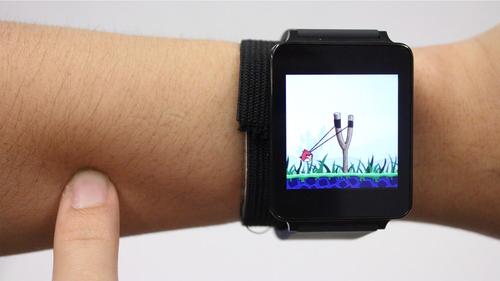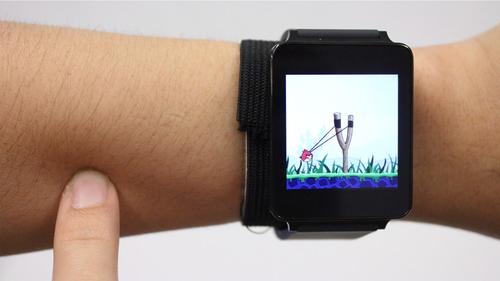'SkinTrack' Tech Turns Human Arm Into a Smart-Watch Touchpad
June 21, 2016

Researchers at Carnegie-Mellon university have taken wearable technology to the next level with an invention that turns the human arm into a touchpad for smart watches.
The so-called SkinTrack, developed by researchers at the Human-Computer Interaction Institute's (HCII's) Future Interfaces Group at Carnegie-Mellon, allows for continuous smart watch touch tracking on the hands and arms. It also can detect touches at different locations on the skin, enabling functionality similar to buttons or slider controls but on human skin instead of a touchscreen interface.
The small interface of smart watch touchscreens -- which are generally too small for people to use their fingers comfortably and thus limit their capability -- were the inspiration for the technology, said Gierad Laput, a PhD student in HCII and part of the research team.

"The interaction suffers as a result," he told Design News in an interview. "But people's fingers are large, which occludes the screen. So the question we wanted to ask ourselves was: How do you make the watch bigger, without actually making it bigger? In response, we looked at the area around the watch -- your skin -- as a potential surface for input and sensing."
The system is comprised of two components -- a signal emitting ring, and a sensing band, Laput said. The ring emits a high-frequency, low-voltage current with an 80MHz electrical signal.
"When you touch your skin while wearing the ring, this signal propagates through your arm," he explained. "The second component, the sensing band, receives the active signal." The technology tracks where a person's finger is as it moves across the arm using electrodes that monitor the strength of the signal in both the X-Y directions, he added.
The technology is different than previous "skin to screen" approaches that have used flexible overlays, interactive textiles, and projector/camera combinations that are not as user friendly and can be cumbersome. A smart ring is a more streamlined approach that leverages an item people might wear regardless of a technology angle, researchers said.
While the technology that powers SkinTrack has existed for a while, using it for a human-device interface advances wearables by turning the skin itself into a sensing platform, Laput said. This, in turn, will create opportunities for new applications and capabilities.
READ MORE ARTICLES ON WEARABLE TECHNOLOGY:
"What's cool is that we are now getting to a point, technology-wise, where capable computers can be worn on the human body," Laput said. "The first wave of applications so far has been to detect coarse activities/states, like heart-rate monitoring, running, walking, standing, etc. But we suspect that as the technology matures, it will offer exciting new opportunities to transform the human body, arms, and skin into an expressive input and sensing platform. This will power rich context-sensitive applications and further augment human activities."
Researchers will continue to work on the technology to improve it in a few areas, including how to optimize power consumption, miniaturize the hardware, and further improve sensing accuracy. "We'd love to see this work integrated into future products," Laput said.
[image via Carnegie-Mellon University]
Elizabeth Montalbano is a freelance writer who has written about technology and culture for more than 15 years. She has lived and worked as a professional journalist in Phoenix, San Francisco, and New York City. In her free time she enjoys surfing, traveling, music, yoga, and cooking. She currently resides in a village on the southwest coast of Portugal.
About the Author(s)
You May Also Like
.jpg?width=300&auto=webp&quality=80&disable=upscale)


